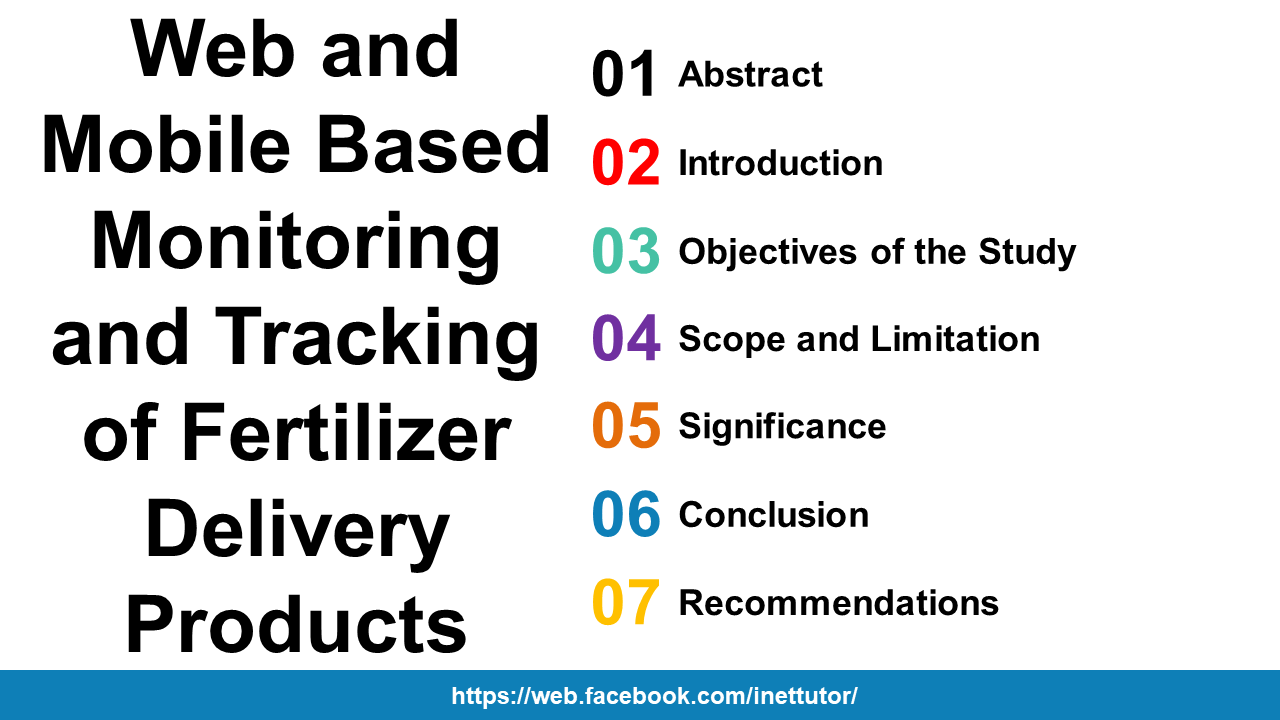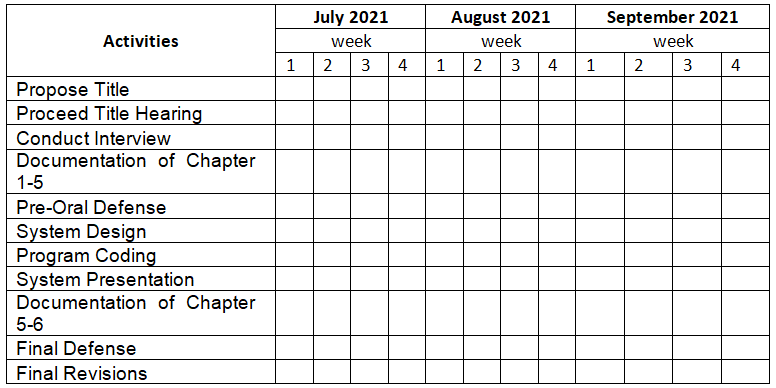Web and Mobile Based Monitoring and Tracking of Fertilizer Delivery Products
Introduction
Table of Contents
In this modern era, it is undeniable that technology plays a very vital role in keeping up with the pace. Technology is part of our life and many people rely on technology. One of these is using a web-based system.
Using Web-based and mobile systems is an advantage for many people as the information can be received and read wherever and whenever it is convenient for them, which can be a crucial factor for a busy executive. A significant amount of interactive multimedia content is now delivered via the internet. (wikipedia.org).
We are now in the Pandemic era brought by the COVID-19 where travel restrictions are very limited to none. Most of the transactions are catered online since the majority of the sectors such as education and businesses cannot fully operate in a face-to-face manner. Customer’s needs have changed dramatically, with most now expecting a fast, reliable delivery service. In order to adapt to these changes, the researchers will propose delivery services that focus on the monitoring and tracking of fertilizer products to be specified using the web and mobile platforms.
Project Context
This capstone project entitled “Web and Mobile Based Monitoring and Tracking of Fertilizer Delivery Products” is a system helpful for the organization because it can be accessed easily. It provides accuracy, security, and speed in generating reports. This system will be created using HTML, CSS, and Bootstrap as the frontend and PHP, JavaScript language as the backend, and MySQL as a connector to our database using XAMPP. The said technologies can develop a responsive web application that can be used not only on desktop and laptop but can also be accessed through mobile devices. Responsive web applications can adjust to the device screen resolution without affecting their user interfaces.

The following are the core components of the project:
Product Management – product information will be translated into an electronic manner for better monitoring and tracking of stocks.
Delivery Monitoring and Tracking – this module will allow the organization to easily track and monitor the status and schedule of product delivery.
Order Management – customer orders will be managed more efficiently and effectively thus establishing better customer relations.
Sales Management – total income of the organization can be recorded and visualize in a real-time scenario.
Report Generation – order reports, sales reports, delivery reports can be generated with a click of a button.
Web and Mobile Access – responsive web design will be applied in the project making it a mobile-friendly application.
Objectives of the Study
The aim of the study is to design, develop and implement an information system that manages the transaction of fertilizer delivery.
Specifically, it aims to:
- Design a responsive web and mobile-friendly application for monitoring and tracking fertilizer delivery.
- Create a module that monitors and tracks the status and schedule of fertilizer delivery.
- Create a module that monitors the sales of the organization
- Create a module that generates reports such as the sales and delivery details.
- To replace the manual processing of monitoring and tracking the delivery of fertilizers.
Scope and Limitation
The main focus of this study is to allow the organization to monitor and track the delivery of fertilizers and generate sales reports. This study is only limited to fertilizer products and does not include any product information.
Significance
The study is beneficial to the following:
Owner. The study will give an efficient service and will develop a qualified service in serving the customers.
Staff. The study will give a hassle-free in working the job rather using the manual process. The developed system helps the working staff tracked the customer’s place of order.
Customer. It will lessen their time in ordering products by using their computers and phones It will help the customers to have a quicker process of ordering.
System Design and Methodology
Software Development Model
This part presents the system design and methodology, the System Development Life Cycle (SDLC) which is a framework defining tasks performed at each step in the software development process. SDLC is a structure followed by a development team within the software organization. It consists of a detailed plan describing how to develop, to maintain, and replace specific software. The life cycle defines a methodology for improving the quality of software and the overall development process. (www.techopedia.com)
Figure 1.0 shows the steps in Software DevelopmentFigure 1.0 Software Development Life Cycle Model
Life Cycle Model in developing the software. The researchers show the different processes to be followed in order to have a better outcome.
Rapid Application Development Model
The researchers used the Rapid Application Development (RAD) model in developing the system. RAD includes the analysis and documentation on the different stages such as data analysis and quick design, system design, prototype cycle, testing, and implementation.
Figure 2.0: Prototype Model Approach
Figure 2.0 above shows the Prototype Model which helps the researchers as a guide to developing the system.
Analysis and Quick Design
During Analysis and Quick Design, the researchers did an interview with the respondents where the study was conducted. The respondents were given the chance to suggest and to request on how the system will be designed and developed. After conducting the data gathering, the researchers made an initial design for the developed system.
Prototype Cycle
This phase will include the process of building a model of a system, the demonstration and the refinement of collected data, and also the analysis of data. The researchers first build a prototype model based on the planned design that will be demonstrated to the client. After building the prototype, the researchers will show the function of the system, the flow on how it works, and the functions of the features that are included in the system. The last stage is refinement. In this stage, the researchers will improve the system by the client’s additional requirements. This will include changes in flow, functions, and features based on the requirements that the client requests. This will help the researchers develop an initial set of system requirements.
Testing
This phase is where the code for the program is written. This will include the feedbacking of the developed system that is installed and tested by three (3) experts and its intended users. This part is put into production by moving the data and components from the old system to the new system.
Implementation
In this phase, the implementation of the developed system will be discussed wherein three (3) experts evaluated the developed system. This phase also discussed if the recommended functions and suggestions of the respondents and users are met.
Gantt Chart
Table 1.0 Schedule of activities for the development of Web and Mobile Based Monitoring and Tracking of Fertilizer Delivery Products

Costing

You may visit our Facebook page for more information, inquiries, and comments.
Hire our team to do the project.


